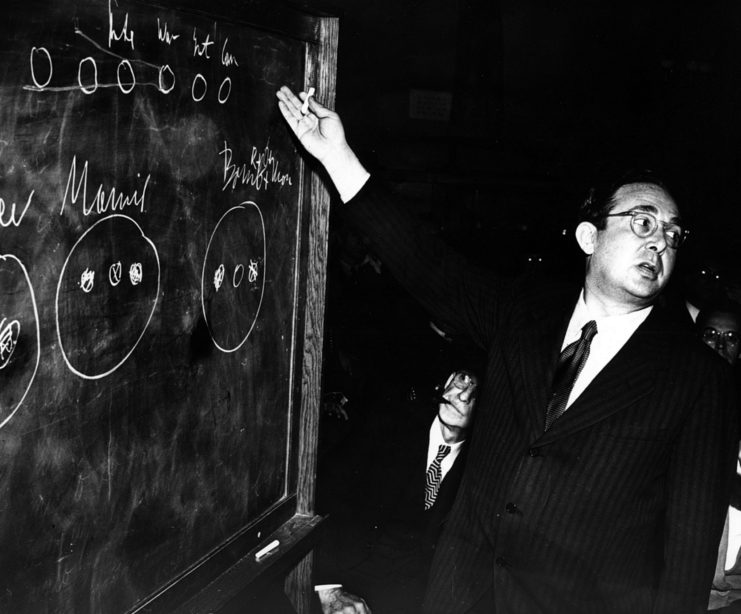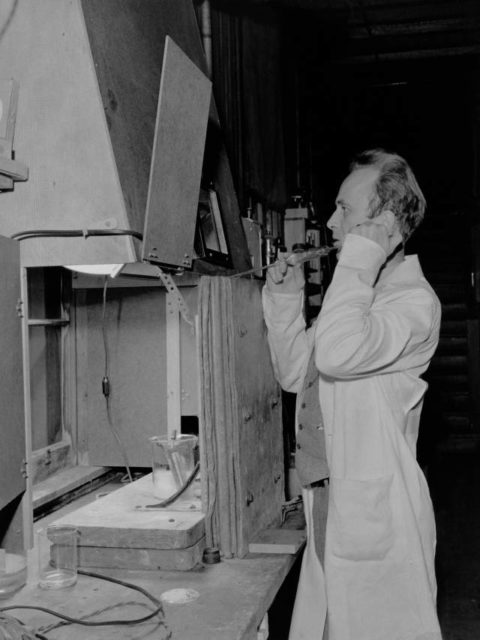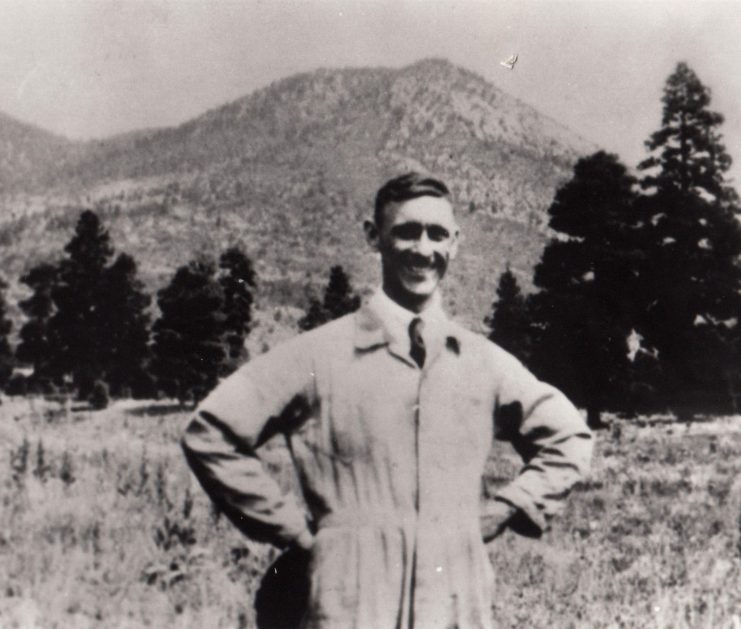In the mid-1940s the US was leading the world in atomic weapons development and the understanding of radioactive materials. Just ten years after plutonium had been discovered, the Manhattan Project was already close to creating a working atomic bomb. Such advances had not been made on the safe handling of such materials, however. This lack of understanding led to researchers on the project injecting people, unwittingly, with plutonium, to study the effects.
The Manhattan Project

The Manhattan Project was the name of the major US research and development program that produced working atomic weapons. It began officially began in 1942, but similar, less intensive research had been ongoing since the late 1930s. The US took the idea of atomic weapons seriously in 1939 when President Franklin D. Roosevelt received the Einstein–Szilárd letter from Hungarian physicists. This letter warned the US about the potential German development of atomic weapons and was signed by Albert Einstein.
While it’s most famous for the development of the atomic bomb, the Manhattan Project encompassed a number of different paths of research at different sites.
Much of this was related to the incredibly complex development and production of the weapons themselves, but a small priority was placed on studying the health effects of the materials involved in the project.
Plutonium injections

To precisely establish what dangers were facing researchers, studies on the effects of radiation began.
To begin with, plutonium toxicity studies were conducted on rats, but these quickly proved to be inconclusive. The decision was made to move onto human trials, which began in 1945.
Because little was known about plutonium outside of scientific circles, and for secrecy, it was decided that the human test subjects would not be informed about the trials. A total of eighteen subjects were injected with plutonium from 1945 to 1947, aged between 4 and 69. Every subject involved in the study had been diagnosed with a terminal illness.
Albert Stevens

One of the subjects was Albert Stevens, a house painter from Ohio in his late 50s. He had visited a hospital for what was believed to be cancer and was told that he had no chance of survival. Experts suggested that a gastroscopy be carried out to make sure the diagnosis was correct, but this never happened.
Because of his certain death, Stevens was unknowingly selected to be injected with plutonium.
Before the operation that would attempt to remove cancer, Stevens was injected with an incredibly high dosage of radiation, more than enough to be life-threatening. Stool and urine samples were taken from Stevens for analysis.
Stevens underwent an extensive operation to remove his cancer, which also saw part of his liver, entire spleen, lymph nodes, part of the pancreas, a part of the omentum, and most of the ninth rib removed.
When some of the material removed from Stevens was analyzed, the experts were stunned to discover that Stevens never had cancer, and in fact, had a large gastric ulcer. Despite this, he was never informed about the radical development and was instead told that his recovery was extraordinary. He had to continue producing samples for just under a year, during which his family suspected he was being used in a study but assumed it had worked.
Surprisingly, Stevens lived until 1966, where he passed away at the age of 79 of heart disease. His cremated remains were collected by the Department of Energy for analysis and never returned.
Of all the subjects involved in the plutonium injection studies, Stevens had received the highest dose of radiation. Out of the eighteen subjects, eight passed away within two years of the injection as a result of their pre-existing health issues, and none died as a result of the experiments.
More From Us: Radiation Levels Higher in Marshall Islands Than in Chernobyl
Fortunately, these particular trials came to an end in 1947, although other similar studies have since been carried out.
In 1950, one of the leading researchers involved in the experiment, Dr. Joseph G. Hamilton, wrote a memo advising against any more human experiments. He hauntingly warned that the Atomic Energy Commission should stay away from such studies to avoid criticism, as they were “a little of the Buchenwald touch.”
